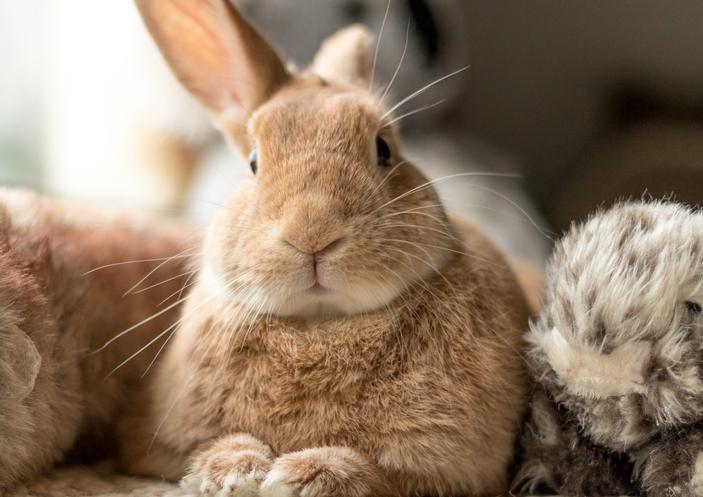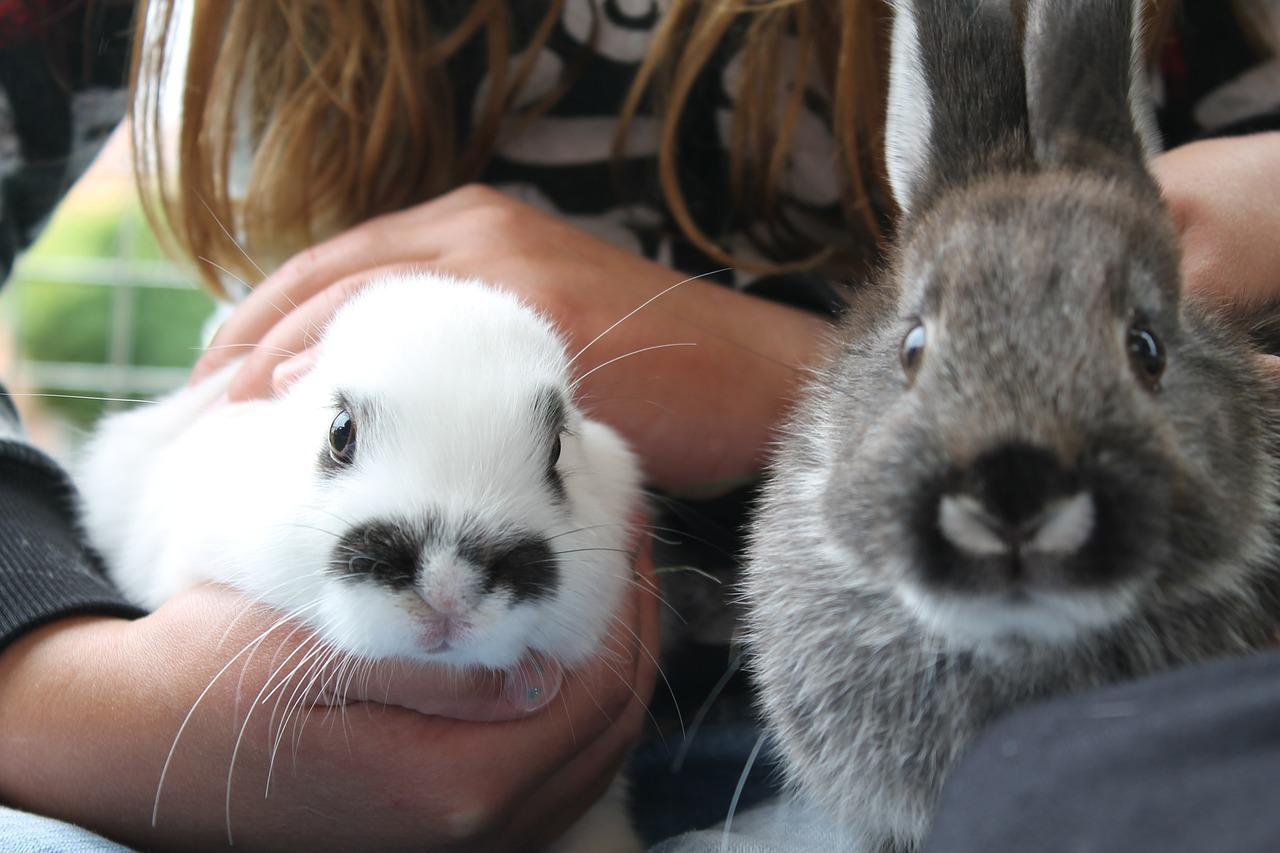10 Most Common Rabbit Sounds

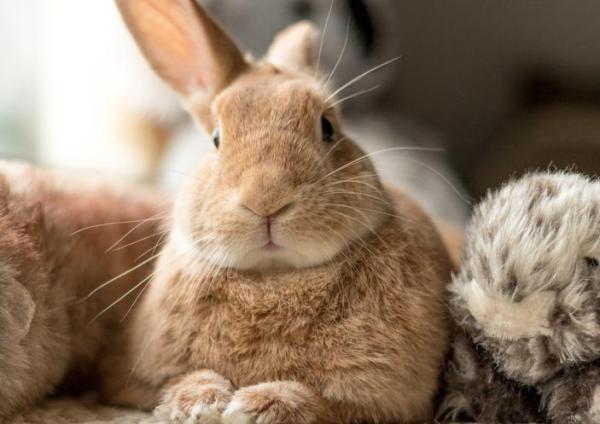

See files for Rabbits
Although rabbits have the reputation of being quiet animals, this doesn't mean they don't make noise. In fact, rabbit sounds have a wide variety of function and purpose. Rabbits make noise to communicate with other rabbits, other animals and even we humans. As rabbit guardians, it's imperative we learn what these noises mean so we can best meet their needs and improve their lives.
In this AnimalWised article, we bring you the 10 most common rabbit sounds and what they mean. Some of them will require you to look at the context of the noise as well as any other signifiers we need to pay attention to.
The language of rabbits
Due to their status as prey animals, rabbits tend to be silent and remain immobile when in the wild. They do so in order to monitor their surroundings for predators and make a hasty retreat when necessary. As a domesticated animal, the situation is different. In the security provided by living in a human world, the situation is different. A rabbit can feel greater security and, therefore, may be likely to make more noise.
Knowing the language of rabbits will help us establish a more positive and healthier relationship with our furry companion. Additionally, we will know how to act in certain situations and when our rabbit is simply behaving in their natural rabbit way. This is why it is helpful to look at specific rabbit sounds and understand their meanings, which is exactly what we do below.
Different rabbit sounds and their meanings
Just because rabbits do not bark or make other loud noises which might annoy the neighbors, doesn't mean they can't vocalize. When we spend time with rabbits we see they make a wide variety of sounds, many are simply more subtle than those made by other animals. Animals need to communicate for a variety of reasons and rabbits are no exception. When they communicate with us humans, it is extra important for us to be mindful. Here are the best examples:
- Clucking: this is a clucking sound but at a very low frequency, almost imperceptible to our ear. This sound is produced while they chew something they like a lot, but not necessarily a food product. It could simply be a piece of wood we have added as environmental enrichment.
- Grunt: rabbits can grunt and they usually do so as a prelude to a bite or hitting with their front paws. It is a defensive sound made when they feel threatened or do not want to be manipulated for whatever reason.
- Purr: rabbits, like cats, can purr. However, this purr is produced by gently rubbing their teeth together. As with cats, it means the rabbit is calm and happy.
- Hiss: rabbits that live with other rabbits hiss to repel members of the same species. They may do so for various reasons.
- Thumping: it is true that when a rabbit will make a strong blow with their hind legs, it is due to danger. Something has happened which poses a threat to their security, they will hit the ground to warn their family that sometime bad is coming, potentially the presence of a predator.
- Grinding teeth: when a rabbit grinds their teeth excessively, it is audible. It is most commonly a sign of pain in rabbits and they are trying to communicate they are suffering. They may also be doing it out of frustration. If you see your rabbit making this sound, take them to the veterinarian.
- Scream: if you have ever heard a rabbit scream, you will know it is quite disconcerting. This sound is produced when they feel threatened or even if they are worried they are dying.
- Whimper: rabbits moan or whimper when they do not want to be handled or manipulated. They can also whine when they are placed with an unwanted partner or when a female communicates to a male they do not want to copulate.
- Humming: this sound is typical of males when they are trying to mate with a female.
- Squeak: accompanied by turning in circles, rabbits will make loud squeaking noises when they are trying to court a partner.
Now you know what sounds rabbits make, it should be helpful in understanding rabbit communication in general. However, we need to look at other aspects of their behavior to best understand what they are trying to convey. Below are only some of them.
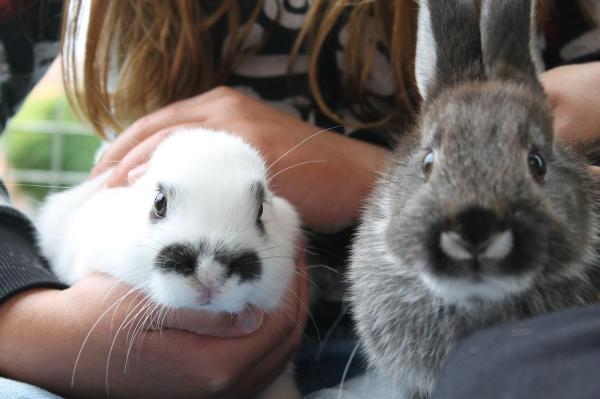
Other rabbit behaviors
In addition to sounds, the behaviors of rabbits can let us know what they are trying to convey. This may be an active communication, but it may also just be a sign of their current mood. Either way, knowing what your rabbit is trying to say is important in taking care of their well-being. Here are some to look out for:
- Fish Flop: this is when the rabbit falls dramatically on their side. Although it may not seem like it, it means they are comfortable, calm and wanting to chill.
- Rubbing their chin: on their chin, rabbits have glands which produce certain pheromones. These pheromones act to mark territory or even identify family members. If they rub their chin against something, even yourself, then they are marking what's theirs.
- Licking: licking is a form of grooming behavior, but it can also be a sign of affection and relaxation.
- Push with their nose: if your rabbit presses you hard with your nose, it may be demanding attention or they may simply want you to get out of their way.
- Urine spraying: if rabbits have not been sterilized, they may also mark their territory by spraying urine. Again, they may not do this only with their territory, but with people and other animals.
- Fold ears back: if your rabbit is in their hutch with their ears folded back against their head, they may be frightened. Do not approach and give them time to adjust.
- Tail movement: rabbits move their tails energetically if they perceive a threat, so be careful if you see this behavior repeated in your rabbit.
- Plucking the hair: a rabbit will pluck its own fur for two main reasons. If a pregnant female rabbit plucks their fur, it is possible they are simply trying to prepare their nest for the kits. The other reason is because they are unwell or stressed.
If you want to know more about rabbit behavior and communication, you can take a look at this article on signs your rabbit loves you. As illustration, you can also see a Fish Flop in the video of the YouTube channel for @CutesyWootseyBunnies:
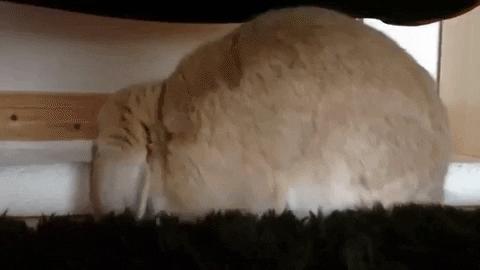
If you want to read similar articles to 10 Most Common Rabbit Sounds, we recommend you visit our Facts about the animal kingdom category.
- Fuentes Paredes, F., Yanavilca, M., Amelia, R., Rivera Rodriguez, R., Márquez, V., & Dante, M. (2010). Guide for handling and care of laboratory animals: rabbits.
- Mykytowycz, R. (1968). Territorial marking by rabbits. Scientific American, 218 (5), 116-129.
- Olivero, R. (1998). Behavior of the rabbit. INIA Disclosure Sheet; 70) (Rabbit cultivation; 18).





